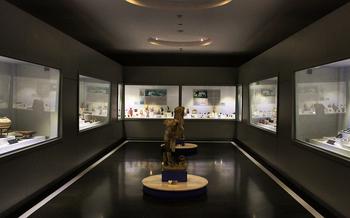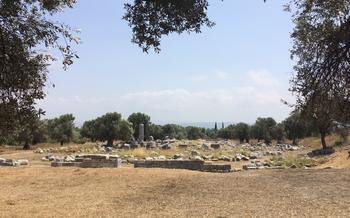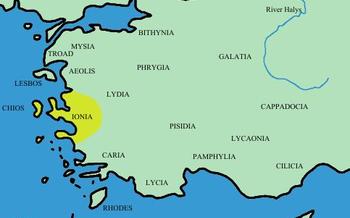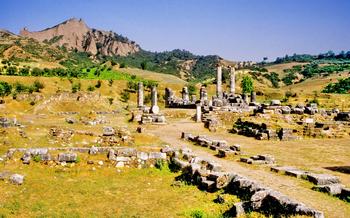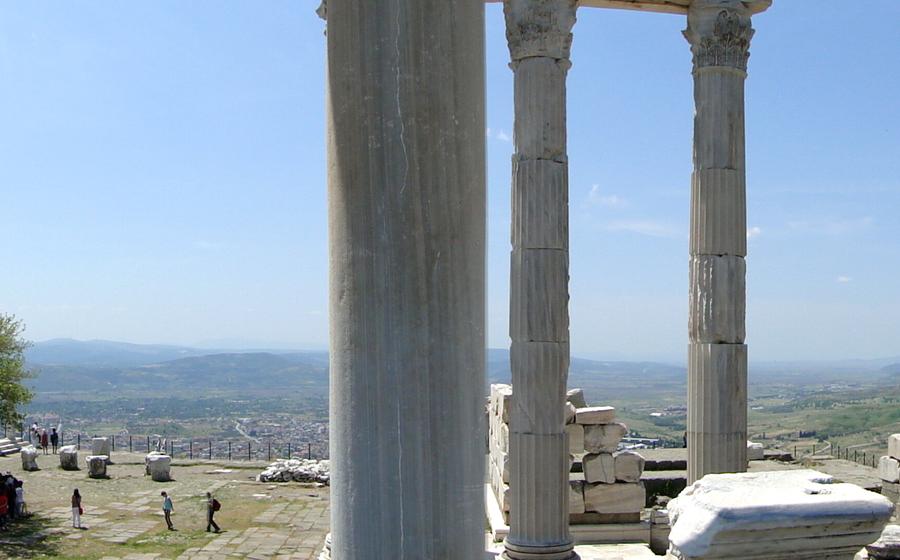
Pergamon Acropolis
- A Journey Through History: Unveiling the Pergamon Acropolis
- Architectural Marvels
- Cultural Legacy
- Must-See Attractions
- Reaching the Acropolis: A Scenic Adventure
- A Glimpse into the Past: Exploring the Acropolis Museum
- The Great Altar of Zeus: A Masterpiece of Ancient Engineering
- Ascending the Acropolis: A Walk Through Time
- The Library of Pergamon: A Repository of Ancient Knowledge
- The Temple of Trajan: A Symbol of Imperial Power
- The Sanctuary of Demeter: A Place of Worship and Ritual
- The Lower City: A Bustling Center of Ancient Life
- The Theater: A Stage for Ancient Performances
- The Asklepieion: A Sanctuary Dedicated to Healing
- The Necropolis: A City of the Dead
- Insider Tip: Discovering Hidden Gems Off the Beaten Path
A Journey Through History: Unveiling the Pergamon Acropolis
Nestled atop a hill overlooking the picturesque city of Bergama, the Pergamon Acropolis stands as a testament to the grandeur and ingenuity of the ancient world. Its origins can be traced back to the 3rd century BC, when the city of Pergamon emerged as a powerful kingdom under the rule of the Attalid dynasty. The acropolis, serving as the royal residence and the religious and cultural center of the kingdom, quickly became a hub of Hellenistic culture and learning, rivaling even the illustrious city of Alexandria.
Over the centuries, the acropolis underwent several expansions and modifications, reflecting the changing political and cultural landscapes of the region. It witnessed the rise and fall of empires, from the Greeks to the Romans, each leaving their unique mark on the architectural and cultural tapestry of this ancient citadel. Today, the Pergamon Acropolis stands as a UNESCO World Heritage Site, inviting visitors from around the globe to embark on a journey through history and marvel at the wonders of this once-great city.
Architectural Marvels
The Pergamon Acropolis is renowned for its architectural marvels, showcasing the ingenuity and artistry of the ancient Greeks. The Great Altar of Zeus, a monumental structure dedicated to the king of the gods, stands as the acropolis's most iconic landmark. Adorned with intricate carvings depicting the Gigantomachy, a mythical battle between the gods and the giants, the altar is a testament to the unparalleled craftsmanship of the Hellenistic era.
The acropolis also boasts several well-preserved theaters, including the Main Theater and the Odeon. These ancient venues, with their impressive acoustics and elaborate stage designs, once hosted theatrical performances, musical concerts, and religious ceremonies, providing a glimpse into the vibrant cultural life of Pergamon.
Cultural Legacy
The Pergamon Acropolis played a pivotal role in the development of Hellenistic culture. It was home to a renowned library, rivaling the Great Library of Alexandria, which housed a vast collection of scrolls covering various subjects, including philosophy, literature, and science. The library served as a center of learning and scholarship, attracting scholars and intellectuals from across the ancient world.
The city of Pergamon also became a prominent center of the Asclepius cult, with the Asklepieion, a sanctuary dedicated to the god of healing, attracting pilgrims seeking cures for their ailments. The sanctuary featured various medical facilities, including a hospital, a pharmacy, and a sacred spring, and played a significant role in the development of ancient medicine.
Must-See Attractions
Among the must-see attractions of the Pergamon Acropolis are the impressive fortifications, which once protected the city from invaders. The acropolis walls, adorned with towers and gates, offer breathtaking panoramic views of the surrounding countryside, providing a glimpse into the strategic importance of this ancient citadel.
The Lower City, located at the foot of the acropolis, offers a glimpse into the daily life of the ancient Pergamenes. The well-preserved ruins of the marketplace, shops, and residential areas provide a fascinating insight into the bustling urban environment of this once-thriving city.
Reaching the Acropolis: A Scenic Adventure
The journey to the Pergamon Acropolis is an adventure in itself, offering breathtaking views and a chance to immerse yourself in the region's natural beauty. Multiple transportation options are available to suit different preferences and budgets. You can opt for a scenic bus ride that winds through picturesque landscapes, offering panoramic vistas of the surrounding countryside. Alternatively, if you prefer a more personalized experience, guided tours are available, providing insightful commentary and historical context throughout the journey. Whether you choose to explore independently or with a group, make sure to pack comfortable shoes, as the Acropolis involves some uphill walking. The best time to visit the Pergamon Acropolis is during spring or autumn, when the weather is pleasant and crowds are smaller. However, if you're looking for a more atmospheric experience, the summer months offer a vibrant energy with various cultural events and festivals taking place in the region.
A Glimpse into the Past: Exploring the Acropolis Museum
Housing a treasure trove of ancient artifacts, the Acropolis Museum stands as a testament to the rich cultural legacy of Pergamon. As you step inside, you'll be greeted by a vast collection of Hellenistic sculptures, each narrating a captivating tale from history's pages. The museum's interactive exhibits bring these stories to life, immersing you in the grandeur of ancient Pergamon.
Peruse the exquisitely carved statues, intricate mosaics, and well-preserved inscriptions, each masterpiece whispering secrets of a bygone era. Among the highlights, don't miss the awe-inspiring Statue of Athena, a symbol of strength and wisdom, and the Dying Gaul, a poignant portrayal of human suffering and resilience.
Beyond the sculptures, the museum houses a fascinating collection of everyday objects, offering a glimpse into the daily lives of Pergamon's inhabitants. From delicate jewelry and intricate pottery to bronze tools and agricultural implements, these artifacts provide a tangible connection to the past.
The Acropolis Museum is not merely a repository of ancient treasures; it's a gateway to a forgotten world, where history comes alive, and the spirit of ancient Pergamon still lingers. Allow yourself to be captivated by the stories etched in stone and immerse yourself in the vibrant legacy of this remarkable city.
The Great Altar of Zeus: A Masterpiece of Ancient Engineering
At the heart of the Pergamon Acropolis, a majestic structure stands as a testament to the ingenuity and craftsmanship of the ancient Greeks: the Great Altar of Zeus. Built in the 2nd century BC, this colossal monument is not just a religious edifice but a masterpiece of ancient engineering and artistry.
Towering over the acropolis, the Great Altar is a testament to the grandeur of the ancient Greek civilization. Its architectural design is a marvel, featuring a monumental staircase leading to a terrace adorned with intricate reliefs depicting the Gigantomachy, the epic battle between the gods and the giants.
The altar's intricate carvings narrate the story of this mythical struggle in vivid detail. Each relief panel showcases the prowess of the gods and the ferocity of the giants, capturing the essence of this epic battle. The altar's grandeur is further enhanced by its sheer size, measuring over 35 meters in width and 30 meters in depth.
The Great Altar of Zeus is not just a religious monument; it is a testament to the extraordinary engineering skills of the ancient Greeks. The altar's construction involved precise calculations, skillful masonry, and intricate drainage systems, demonstrating the advanced engineering knowledge of the time.
This awe-inspiring monument stands as a symbol of ancient Greek artistry and engineering prowess. Its intricate carvings, colossal size, and architectural complexity make it a must-see attraction for anyone visiting the Pergamon Acropolis.
Ascending the Acropolis: A Walk Through Time
As you begin your ascent up the winding path leading to the Acropolis, the imposing fortified walls that once protected this ancient city come into view. These towering structures, with their battlements and gateways, stand as a testament to the engineering prowess of the ancient Greeks. Take a moment to admire the intricate stonework and the strategic positioning of the fortifications, which were designed to withstand enemy attacks and provide a safe haven for the city's inhabitants.
As you climb higher, the stunning panoramic views of the surrounding landscape begin to unfold. From this vantage point, you can gaze out over the modern city of Bergama, nestled amidst rolling green hills and lush valleys. On a clear day, you can even catch a glimpse of the shimmering Aegean Sea in the distance. The breathtaking scenery serves as a constant reminder of the natural beauty that surrounds this ancient site.
Along the way, you will encounter several ancient theaters, each with its own unique history and architectural features. These theaters were once the center of cultural and social life in Pergamon, hosting everything from dramatic performances and musical concerts to political assemblies and religious ceremonies. Take a seat in one of the well-preserved stone seats and imagine the atmosphere of these ancient gatherings, where the city's citizens came together to experience art, entertainment, and community.
As you reach the summit of the Acropolis, you will be greeted by a sense of awe and wonder. Here, among the ruins of temples, libraries, and other important buildings, you can truly feel the weight of history and the grandeur of the ancient city. Prepare yourself to be transported back in time as you explore the remains of this once-great metropolis, where every stone tells a story of a civilization that has long since passed.
The Library of Pergamon: A Repository of Ancient Knowledge
Amidst the architectural wonders of the Pergamon Acropolis, the Library of Pergamon stands as a testament to the city's rich cultural legacy. Constructed in the 2nd century BC, this magnificent structure was once one of the largest and most renowned libraries in the ancient world, housing a vast collection of scrolls and manuscripts that rivaled those of Alexandria.
Designed with meticulous precision, the library boasted a grand reading room, adorned with intricate frescoes and sculptures, providing a serene and inspiring ambiance for scholars and students. Its shelves were lined with countless scrolls, covering a wide range of subjects, from philosophy and history to mathematics and medicine, reflecting the intellectual pursuits of the Hellenistic era.
The Library of Pergamon not only served as a repository of knowledge but also as a center of learning and scholarship. Renowned scholars and philosophers flocked to the library to conduct research, engage in intellectual discourse, and contribute to the advancement of knowledge. It became a hub for the exchange of ideas and the dissemination of learning throughout the ancient world.
As you wander through the ruins of the library, you can almost imagine the bustling atmosphere of ancient scholars poring over scrolls, engaging in lively debates, and contributing to the intellectual fabric of their time. The Library of Pergamon stands as a poignant reminder of the enduring power of knowledge and the profound impact it has had on shaping human civilization.
The Temple of Trajan: A Symbol of Imperial Power
As you ascend the Acropolis, you will encounter the majestic Temple of Trajan, a testament to Roman influence and imperial grandeur. Built in the 2nd century AD, this temple stands as a symbol of the power and prestige of the Roman Empire.
Featuring the distinctive Corinthian architectural style, the temple boasts an impressive array of well-preserved ruins, including towering columns, intricate carvings, and a grand staircase. These remnants transport visitors back in time, allowing them to envision the grandeur and opulence of the Roman era.
Dedicated to the deified Roman emperor Trajan, this temple served as a place of worship and a symbol of imperial authority. Its strategic location atop the acropolis further emphasized the power and dominance of the Roman Empire.
As you explore the ruins of the Temple of Trajan, let your imagination soar and picture the ceremonies and rituals that once took place within its sacred walls. This architectural marvel stands as a testament to the enduring legacy of Roman rule and the grandeur of ancient civilizations.
The Sanctuary of Demeter: A Place of Worship and Ritual
Tucked away in the lower slopes of the acropolis, the Sanctuary of Demeter was once a vibrant place of worship dedicated to the Greek goddess of agriculture and fertility, Demeter. This sacred site was built in the 2nd century BC and served as a religious center for the people of Pergamon.
As you approach the sanctuary, you will be greeted by the ruins of a monumental propylon, an impressive gateway that once led to the sacred precinct. Beyond the propylon, you will find the remains of a large courtyard, where ancient pilgrims would gather for ceremonies and rituals.
Within the courtyard, you can explore the ruins of several buildings, including a temple dedicated to Demeter, a stoa (a covered walkway), and a hall for banquets and religious feasts. The well-preserved foundations and architectural fragments provide a glimpse into the grandeur of this once-thriving sanctuary.
As you wander through the ruins, imagine the ancient Greeks participating in religious processions, offering sacrifices to Demeter, and seeking her blessings for a bountiful harvest. The Sanctuary of Demeter offers a unique opportunity to connect with the spiritual beliefs and practices of the ancient world.
The Lower City: A Bustling Center of Ancient Life
Beyond the acropolis, the lower city of Pergamon bustled with life and activity. Here, you can wander through the ancient marketplace, where merchants once sold their wares, and admire the well-preserved shops that lined the streets. The residential areas offer a glimpse into the daily lives of Pergamon's inhabitants, with their intricate mosaics and frescoes that adorn their walls.
Public baths, essential for maintaining hygiene and promoting social interaction, can also be found in the lower city. These well-preserved structures provide a fascinating glimpse into the bathing rituals and customs of ancient times.
The lower city was a thriving urban center, where people from all walks of life came together to conduct business, socialize, and engage in various activities. It was a place where cultures and ideas intermingled, creating a vibrant and cosmopolitan atmosphere.
The Theater: A Stage for Ancient Performances
The theater at Pergamon is a truly remarkable sight. Built in the 2nd century BC, it was one of the largest theaters in the ancient world, with a seating capacity of over 10,000 people. The theater is remarkably well-preserved, with its seating areas still intact and its acoustics still superb.
Attending a performance in the Pergamon theater would have been a truly immersive experience for ancient audiences. The theater's design allowed for excellent sightlines and acoustics, ensuring that even those sitting in the back rows could see and hear the performance clearly. The stage was large and elaborate, with a backdrop of painted scenery that would have added to the spectacle of the performance.
The theater was used for a variety of performances, including plays, concerts, and festivals. It was also used for political assemblies and other public events. The theater was an important part of life in Pergamon, and it played a significant role in the city's cultural and social development.
Today, the theater at Pergamon is still used for performances. It is a popular venue for concerts, plays, and other events. Visitors to Pergamon can experience the theater's amazing acoustics and atmosphere by attending a performance or simply by taking a tour of the ruins.
The Asklepieion: A Sanctuary Dedicated to Healing
In ancient Pergamon, nestled amidst the grandeur of the Acropolis, stood the Asklepieion, a sanctuary devoted to the healing arts. Dedicated to Asclepius, the Greek god of medicine, this sacred site served as a place of healing and rejuvenation for the sick and injured.
Spread over several terraces, the Asklepieion comprised various structures, including a temple, a hospital, and a thermal bath complex. The temple, adorned with exquisite sculptures and inscriptions, served as a place of worship and prayer. Devotees would visit the sanctuary, seeking divine intervention and guidance in their quest for healing.
The hospital, known as the valetudinarium, was a marvel of ancient medicine. Here, skilled physicians and healers employed various techniques to treat ailments, including herbal remedies, surgery, and hydrotherapy. Patients would reside in the hospital for extended periods, receiving care and guidance from the resident medical practitioners.
The thermal baths, with their soothing waters and therapeutic properties, played a crucial role in the healing process. Bathing in the mineral-rich waters was believed to alleviate pain, promote relaxation, and enhance overall well-being. The Asklepieion also featured a gymnasium, where patients engaged in physical activities to restore their strength and vitality.
Beyond its medical significance, the Asklepieion was a center of learning and research. Physicians gathered here to exchange knowledge, conduct experiments, and advance the field of medicine. The sanctuary also housed a library containing medical texts and treatises, contributing to the dissemination of medical knowledge throughout the ancient world.
Today, the ruins of the Asklepieion stand as a testament to the remarkable medical advancements of ancient Pergamon. Visitors can explore the well-preserved structures, marvel at the intricate sculptures, and gain insights into the practices and rituals associated with ancient healing. The Asklepieion serves as a poignant reminder of the enduring human quest for health, well-being, and the pursuit of a life free from illness.
The Necropolis: A City of the Dead
The ancient city of Pergamon held a profound reverence for its deceased, as evidenced by the elaborate Necropolis, or City of the Dead, that lies just outside the city walls. Here, visitors can journey through time and witness the fascinating burial customs of the ancient Greeks and Romans.
Intricate tombs and sarcophagi, adorned with exquisite carvings and inscriptions, line the pathways of the Necropolis. Each tomb tells a unique story, offering a glimpse into the lives and beliefs of the individuals laid to rest within. From grand mausoleums to humble family crypts, the Necropolis provides a tangible connection to the rich cultural and spiritual heritage of Pergamon.
Exploring the Necropolis is an immersive experience that transports visitors to a realm where the living and the dead intertwined. The atmosphere is palpable, with a sense of reverence and mystery permeating the air. As you wander through the ancient burial grounds, you can't help but feel a connection to those who once called Pergamon home.
The Necropolis serves as a reminder of the enduring legacy of Pergamon and the deep respect its people held for their ancestors. It is a place of contemplation, where visitors can reflect on the cycle of life and death and the enduring power of memory.
Insider Tip: Discovering Hidden Gems Off the Beaten Path
Venture beyond the main attractions and uncover the hidden treasures that Pergamon holds. Explore the lesser-known ruins, such as the Temple of Athena or the Gymnasium, which offer a glimpse into the city's rich history. Immerse yourself in the local cuisine by savoring traditional dishes at family-run restaurants, where you can engage with friendly locals and learn about their culture. Take the opportunity to interact with the welcoming people of Pergamon, who are eager to share stories and insights about their city. By stepping off the beaten path, you'll create a unique and memorable experience that will leave you with a deeper understanding and appreciation for this ancient city.
